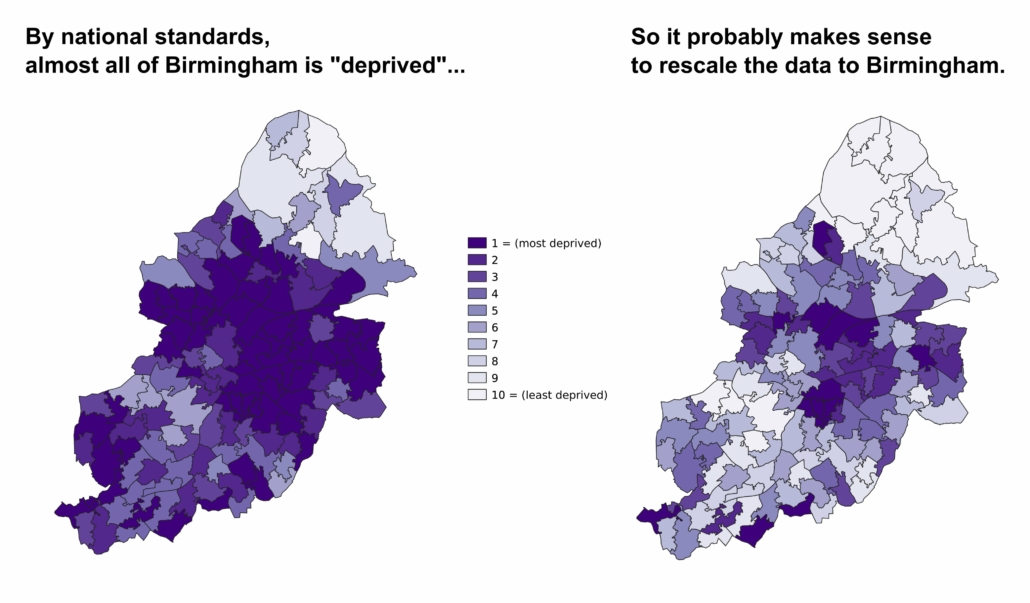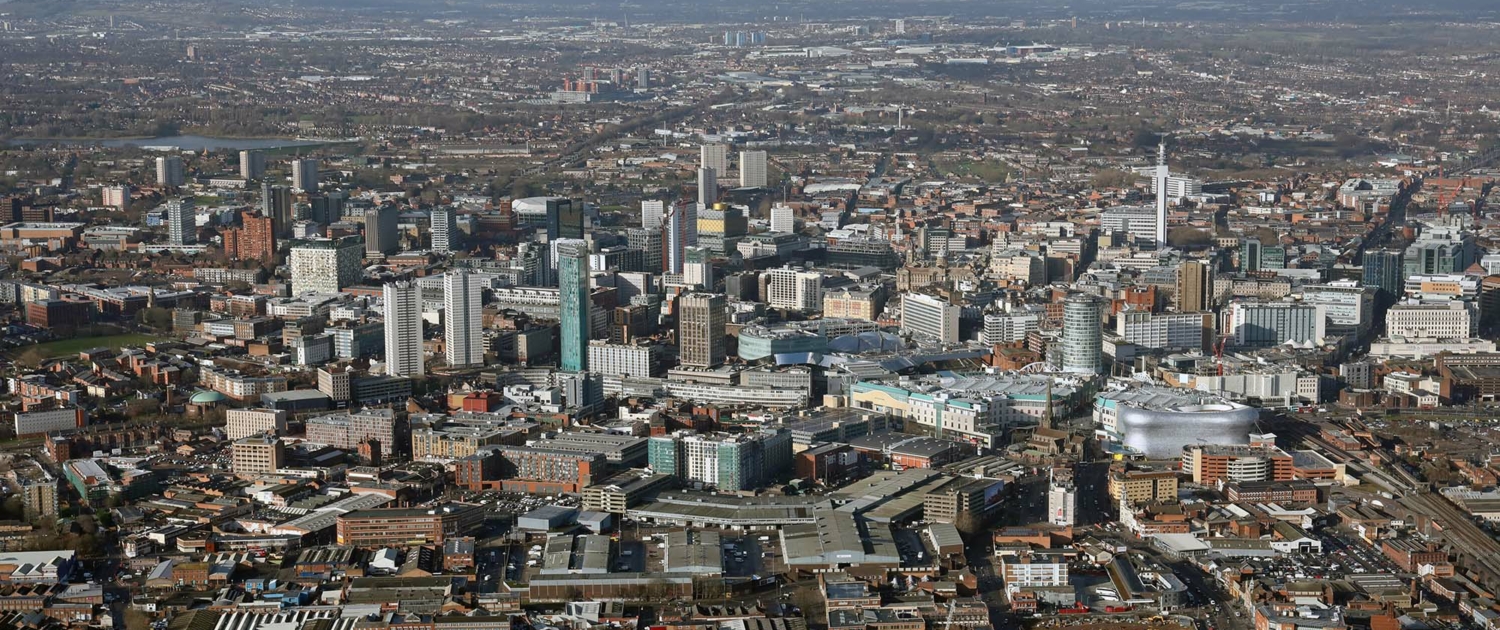Home > Geotopics > Birmingham > How is migration changing Birmingham?
How is migration changing Birmingham?
What are the causes of migration to Birmingham?
The migration pattern in Birmingham is a combination of pull and push factors. ‘Push’ factors, like a shortage of employment opportunities, tend to repel people from certain areas, while ‘pull’ factors, such as improved services, draw them towards other regions.
National and international migration of students to areas such as Aston has led to studentification (an increase in the number of young adults and the services begin to reflect this, and houses of multiple occupancies develop). The inner-city area around the newly redeveloped Brindley Place has a wide variety of highly skilled and high-wage national and international migrants.
Other inner-city areas like Digbeth have experienced waves of past and new migrants due to lower housing prices. Traditionally an Irish Catholic area, as these groups grew in wealth and moved towards the suburbs, newer migrant groups attracted by the Catholic churches and community moved in. This is currently a predominantly Polish area with the Katyn Café and Restaurant. Other areas have specialised to meet the needs of their population in both religious institutions and community centres, music and cuisine with mosques in Alum Rock, large-scale Diwali celebrations in south and west Birmingham and the Afro Caribbean Millennium Centre based in Kings Heath.
What is the influence of migrants on different areas of Birmingham?
Many international migrants have settled in Birmingham’s inner-city areas, such as Sparkbrook, Small Heath, Ladywood, Handsworth, Aston, and Soho. They were attracted by the affordable terraced houses available for rent and eventual purchase. Over time, these areas have seen the growth of vibrant communities comprising people from Pakistan, India, and Bangladesh. Currently, these city districts offer a variety of shops, services, and places of worship.
The choropleth map above shows the distribution of Birmingham’s population born outside the UK (international migrants). Many of the population living in the inner city and the northwest of Birmingham were born outside of the UK. Generally, the proportion of people born outside the UK decreases towards the suburbs.
Many recent immigrants have gravitated towards the city’s eastern areas, specifically around Bordesley, which is close to the city centre. In these parts, the terraced houses and apartment blocks were relatively affordable to rent or purchase, and community centres have been established to cater to the needs of both existing and new communities.
While immigrants might influence the characteristics of the areas they settle in, their initial location choices are often restricted. An increase in their numbers could result in various impacts on the areas they inhabit.
Age structure – Immigrants often settle in city areas with a young population. They typically have young children or are on the verge of starting families, which leads to increased demand for school spots.
Ethnicity – These parts of the city are generally the most ethnically diverse.
Population – Projections suggest these areas will experience some of the fastest population growth over the next decade.
Housing – The housing in these areas is often older, consisting of 1970s tower blocks or high-density low-rise terraces, making it more affordable.
Services – These city districts require various services, from health to education and employment. However, they are also some of the city’s most impoverished and deprived areas.
Deprivation – The Index of Multiple Deprivation (IMD) employs data related to income, employment, health, deprivation, disability, education, housing, crime, and environment to formulate an index that mirrors the quality of life. The IMD pattern for Birmingham is displayed below, highlighting inequalities partly based on ethnicity. Find out more about Brimingham’s IMD.

A choropleth map showing Birmingham’s IMD using English Indices of Multiple Deprivation vs a scaled version specifically for the city
Source: Tom Forth – https://twitter.com/thomasforth/status/1262875967166562304
Culture – Migrants introduce a rich cultural mix to the city, contributing to Birmingham’s status as one of the UK’s most diverse cities. While this diversity can occasionally give rise to tensions, it also draws individuals and businesses to the city.
Related Topics
Use the images below to explore related GeoTopics.



